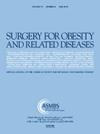建立预测术后体重指数的模型,优化减肥手术 - 一项单中心试点研究
IF 3.5
3区 医学
Q1 SURGERY
引用次数: 0
摘要
该初步研究解决了预测减肥手术后预后的挑战,特别是体重指数(BMI)轨迹。这项任务的复杂性使得术前个性化肥胖治疗具有挑战性。目的开发和验证复杂的机器学习(ML)算法,该算法能够准确预测减肥手术后长达5年的BMI下降,旨在加强计划和术后护理。第二个目标涉及为医疗保健专业人员创建一个可访问的基于web的计算器。这是第一篇比较BMI预测方法的文章。该研究于2012年1月至2021年12月在瑞士GZOAdipositas手术中心进行。术前有1004例患者资料。术后6个月,1098例患者的数据可用。12个月、18个月、2年、3年、4年、5年随访人数分别为:971人、898人、829人、693人、589人和453人。方法:我们对接受减肥手术(Roux-en-Y胃旁路术或袖胃切除术)的成年患者进行了全面的回顾性研究,重点关注术前和术后资料。有一定术前条件和缺乏完整资料集的患者被排除在外。附加的排除标准是资料或随访不完整、随访期间妊娠或术前BMI≤30 kg/m2。结果本研究分析了1104例患者,其中883例用于模型训练,221例用于最终评估,通过均方根误差(RMSE)测量,研究获得了可靠的预测能力。三个任务的RMSE值分别为2.17(预测下一个BMI值)、1.71(预测未来任何时间点的BMI)和3.49(预测术后5年BMI曲线)。这些结果通过web应用程序展示,提高了临床可访问性和决策。结论:本研究强调了ML通过精确的BMI预测和个性化干预策略显著改善减肥手术结果和整体医疗效率的潜力。本文章由计算机程序翻译,如有差异,请以英文原文为准。
Development of predictive model for predicting postoperative BMI and optimize bariatric surgery: a single center pilot study
Background
The pilot study addresses the challenge of predicting postoperative outcomes, particularly body mass index (BMI) trajectories, following bariatric surgery. The complexity of this task makes preoperative personalized obesity treatment challenging.
Objectives
To develop and validate sophisticated machine learning (ML) algorithms capable of accurately forecasting BMI reductions up to 5 years following bariatric surgery aiming to enhance planning and postoperative care. The secondary goal involves the creation of an accessible web-based calculator for healthcare professionals. This is the first article that compares these methods in BMI prediction.
Setting
The study was carried out from January 2012 to December 2021 at GZOAdipositas Surgery Center, Switzerland. Preoperatively, data for 1004 patients were available. Six months postoperatively, data for 1098 patients were available. For the time points 12 months, 18 months, 2 years, 3 years, 4 years, and 5 years the following number of follow-ups were available: 971, 898, 829, 693, 589, and 453.
Methods
We conducted a comprehensive retrospective review of adult patients who underwent bariatric surgery (Roux-en-Y gastric bypass or sleeve gastrectomy), focusing on individuals with preoperative and postoperative data. Patients with certain preoperative conditions and those lacking complete data sets were excluded. Additional exclusion criteria were patients with incomplete data or follow-up, pregnancy during the follow-up period, or preoperative BMI ≤30 kg/m2.
Results
This study analyzed 1104 patients, with 883 used for model training and 221 for final evaluation, the study achieved reliable predictive capabilities, as measured by root mean square error (RMSE). The RMSE values for three tasks were 2.17 (predicting next BMI value), 1.71 (predicting BMI at any future time point), and 3.49 (predicting the 5-year postoperative BMI curve). These results were showcased through a web application, enhancing clinical accessibility and decision-making.
Conclusion
This study highlights the potential of ML to significantly improve bariatric surgical outcomes and overall healthcare efficiency through precise BMI predictions and personalized intervention strategies.
求助全文
通过发布文献求助,成功后即可免费获取论文全文。
去求助
来源期刊
CiteScore
6.70
自引率
12.90%
发文量
570
审稿时长
56 days
期刊介绍:
Surgery for Obesity and Related Diseases (SOARD), The Official Journal of the American Society for Metabolic and Bariatric Surgery (ASMBS) and the Brazilian Society for Bariatric Surgery, is an international journal devoted to the publication of peer-reviewed manuscripts of the highest quality with objective data regarding techniques for the treatment of severe obesity. Articles document the effects of surgically induced weight loss on obesity physiological, psychiatric and social co-morbidities.

 求助内容:
求助内容: 应助结果提醒方式:
应助结果提醒方式:


